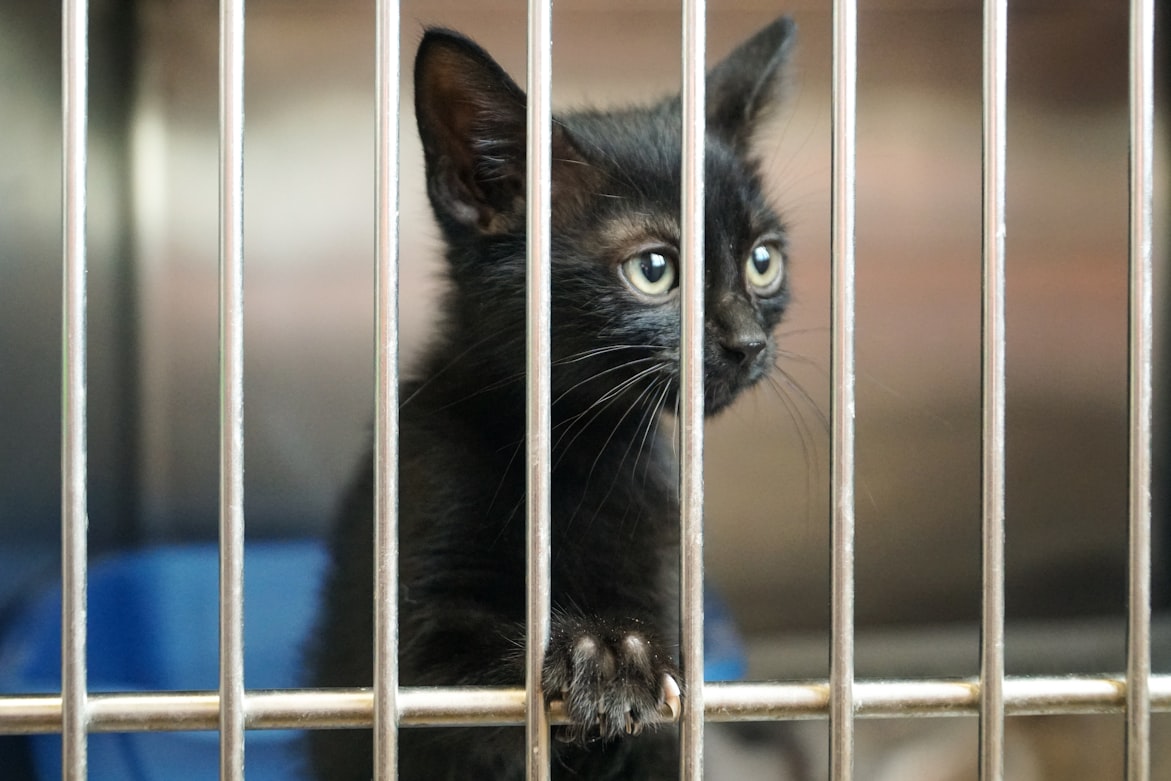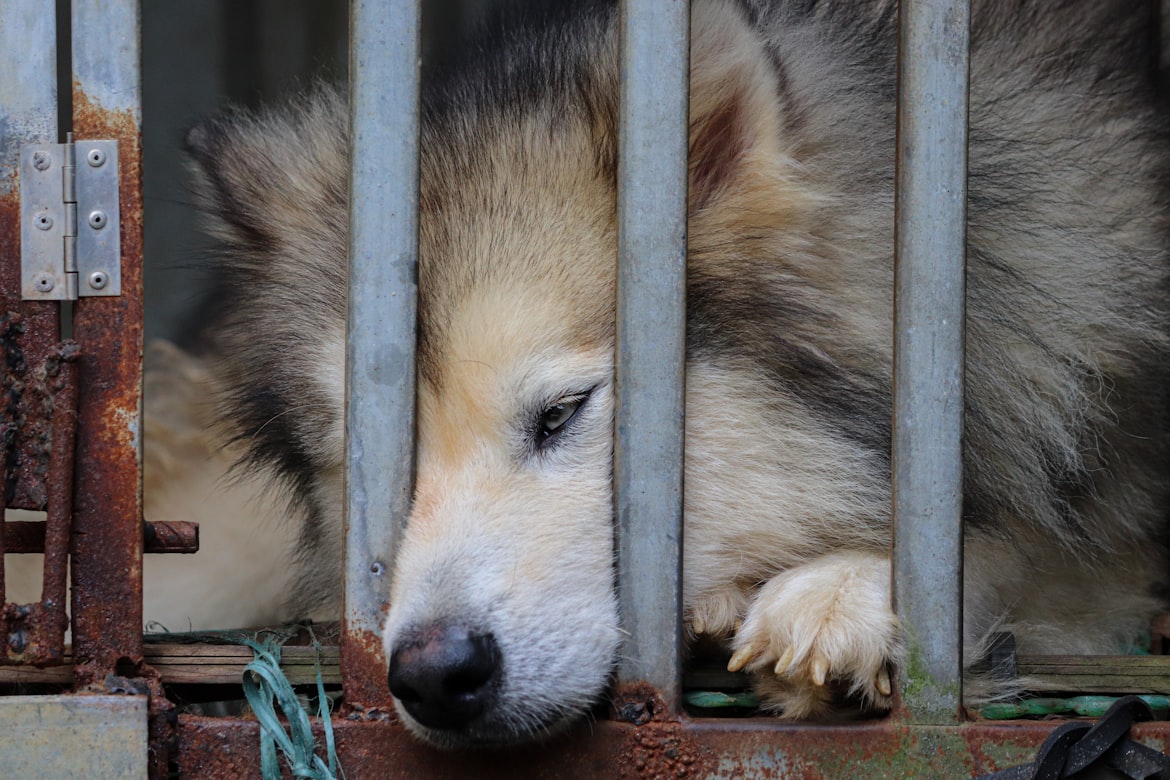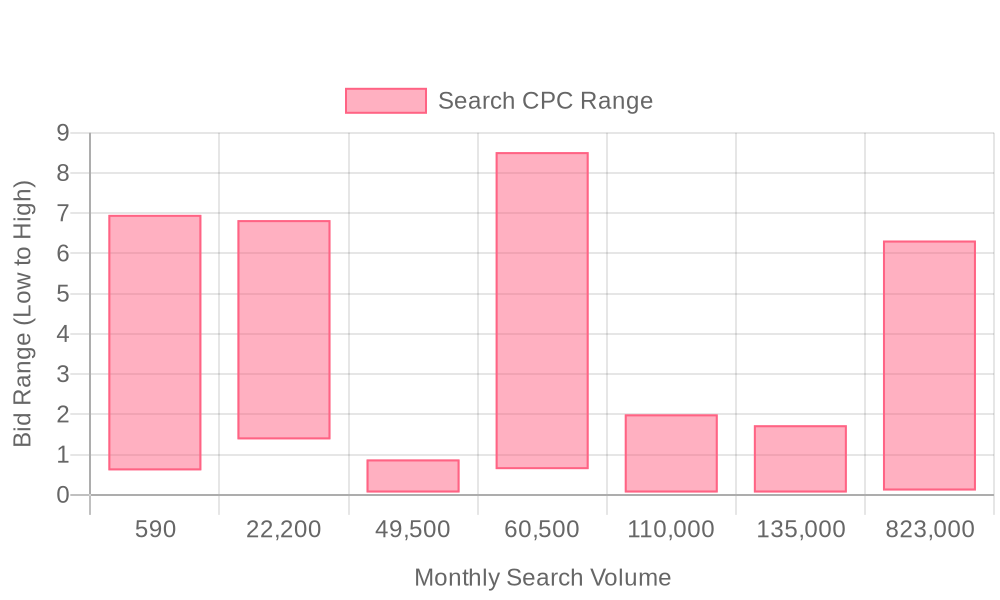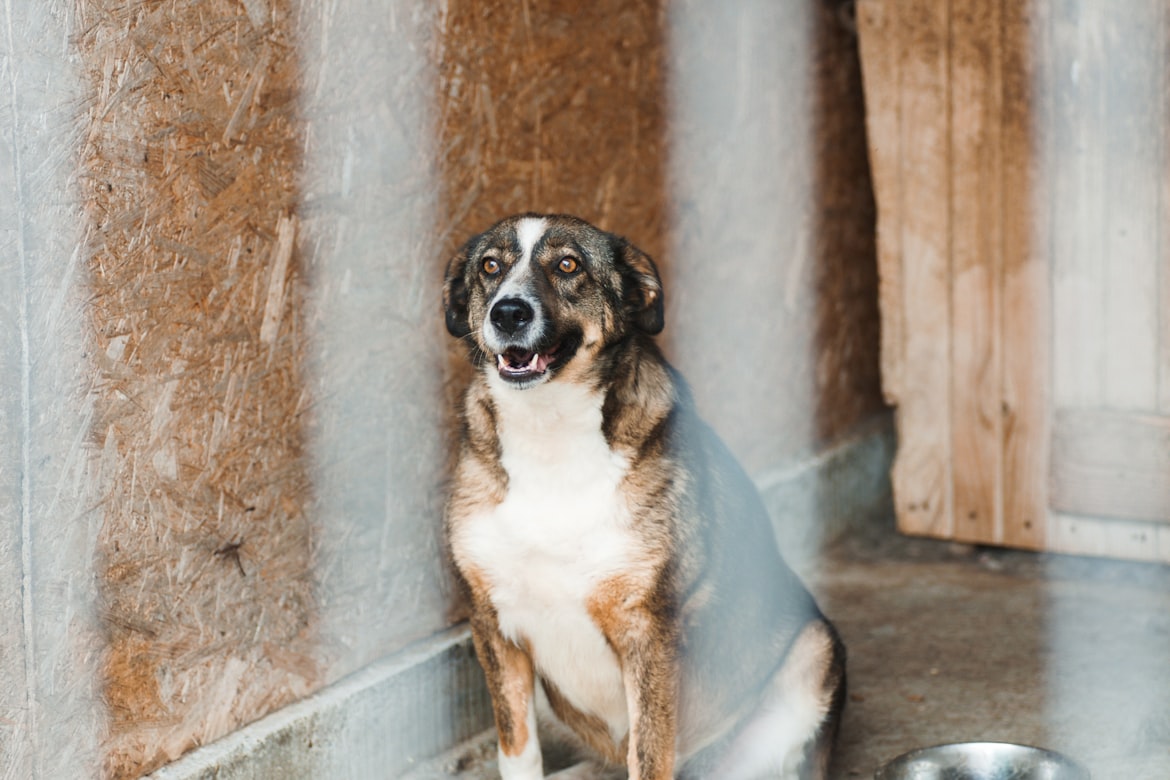
Supercharge your lead generation with a FREE Google Ads audit - no strings attached! See how you can generate more and higher quality leads
Get My Free Google Ads AuditFree consultation

No commitment
Supercharge your lead generation with a FREE Google Ads audit - no strings attached! See how you can generate more and higher quality leads
Get My Free Google Ads AuditFree consultation

No commitment
In today's rapidly evolving digital marketing world, leveraging Google Ads for Pet Adoption Services can significantly bridge the gap between online visibility and offline adoption success. As pet adoption services aim to capture high-intent adopters precisely when they search for new pets, Google Ads provides a unique opportunity to target, engage, and convert potential adopters. This source of actionable insights and measurable outcomes becomes essential in optimizing marketing efforts to generate meaningful leads that convert into happy adoptions. Many organizations struggle with missing high-value prospects when they aren't properly tracked in the CRM, leading to lost opportunities. Advanced tools now ensure ad spend targets real decision-makers who have shown genuine interest, rather than unqualified traffic.

Digital marketing has become essential for pet adoption organizations striving to connect the right families with animals in need. By leveraging a data-driven Google Ads strategy for animal shelters in 2023, animal shelters and adoption services can significantly increase their reach, cultivate high-quality leads, and accelerate adoption rates.
A well-orchestrated Google Ads campaign enables precise targeting of local adopters, donors, and volunteers by aligning keyword intent with specific search behaviors. Rapid lead engagement, powered by real-time audience insights and automated workflows, ensures that every inquiry receives a personalized response, converting interest into action before momentum is lost.
Delayed follow-up is a common pitfall in pet adoption advertising, leading to missed connections and lost opportunities. By leveraging intent signals and unified lead data, shelters can deliver relevant, personalized ads and engagement at the precise moment of interest, driving more successful outcomes and building long-term relationships with their community. If you're ready to take your pet adoption lead generation to the next level, get started for free with Sona.

Pet adoption organizations face mounting pressure to match animals with the right adopters quickly, especially as shelter populations rise and community expectations for transparency and responsiveness grow. Google Ads addresses these challenges by connecting shelters directly with high-intent adopters at the exact moment they are searching for a new pet, dramatically reducing the gap between awareness and adoption. For a real-world example, see how Cat Care Society leveraged Google Ad Grants to increase donations and ad performance in this case study.
Traditional mass marketing often leads to wasted spend and low engagement, but Google Ads for Pet Adoption Services allows organizations to tailor messaging based on user behavior, location, and adoption urgency. This level of precision ensures that each campaign reaches individuals most likely to take action, whether they are motivated by a specific breed, age, or cause such as rescue or special needs animals. For more digital marketing insights, visit the Sona blog.
With the ability to deploy targeted ads within hours and adjust campaigns in real time, animal shelters can respond rapidly to emergencies, surges in intake, or urgent fundraising needs. Data integration from marketing and CRM systems transforms every click and application into actionable insights, allowing teams to optimize their campaigns and measure which strategies actually drive successful adoptions and donations. To streamline this process, Sona Destinations enables automatic syncing of high-quality audience data into your CRM and ad platforms for seamless activation.
By unifying pet adoption advertising and audience data, organizations can identify which visitor profiles convert at the highest rates and allocate budget accordingly. Marketers move beyond guessing at anonymous website traffic, pinpointing the companies and individuals expressing real interest, and syncing enriched audiences back into their online pet adoption marketing campaigns for improved retargeting and engagement.
In short, Google Ads empowers animal shelter marketing teams to deliver the right message to the right person at the right time. When paired with advanced platforms that unify CRM, web, and ad data, shelters can achieve a new level of efficiency, accountability, and impact in their digital marketing for animal shelters. This results in more lives saved, reduced operational strain, and a measurable increase in ROI for local pet adoption ads and pet services PPC initiatives. Looking to streamline your ad campaigns and audience targeting? Get started for free with Sona.

Ready to see how these strategies can boost your adoption campaigns? Get started for free with Sona.
Pet adoption marketing demands a focused approach that uncovers real growth opportunities in an increasingly crowded digital landscape. By refining targeting strategies and tapping into data-driven insights, shelters and pet services can elevate both adoption and donor conversion rates while maximizing limited budgets.
Growth in this sector hinges on connecting the right message to the right audience at the right time. By blending vertical targeting, ongoing market analysis, strategic placements, and dynamic retargeting, shelters and pet adoption services unlock new paths to sustainable expansion. If your team is ready to accelerate results, get started for free with Sona.
Audience segmentation is crucial for driving efficient growth in pet adoption services. Modern shelters that segment their audiences see higher engagement, more targeted messaging, and a measurable lift in both adoption applications and donor conversions. To explore more strategies for expanding donor outreach in animal nonprofits, check out these actionable strategies for animal nonprofits.

| Industry | Keyword | Monthly Search Volume | Competition Level | Low Bid | High Bid |
| Pet Adoption Services | pet adoption services | 590 | LOW | 0.61 | 6.96 |
| Pet Adoption Services | adoption center | 22200 | LOW | 1.38 | 6.83 |
| Pet Adoption Services | puppies for adoption near me | 49500 | LOW | 0.06 | 0.88 |
| Pet Adoption Services | animal rescue near me | 60500 | LOW | 0.64 | 8.52 |
| Pet Adoption Services | cat adoption near me | 110000 | LOW | 0.06 | 2 |
| Pet Adoption Services | pet adoption near me | 135000 | LOW | 0.06 | 1.73 |
| Pet Adoption Services | animal shelter near me | 823000 | LOW | 0.11 | 6.32 |
A focused keyword strategy is essential for driving qualified adoption inquiries, donor interest, and volunteer signups in pet adoption services. Precision in keyword selection connects high-intent searchers—those ready to adopt, foster, or support—with the right shelter offerings, ensuring marketing budgets generate measurable outcomes. With digital adoption rising, organizations that master search intent and local relevance consistently outperform peers in generating awareness and conversions. For organizations seeking tactical guidance on optimizing their campaigns, the collection of B2B marketing playbooks offers actionable frameworks.
Successful campaigns balance broad, high-volume keywords like "pet adoption" with localized, high-intent terms such as "adopt a dog in Austin" or "cat shelter near me." This dual approach captures both early-stage researchers and those actively seeking to adopt or donate within a specific community. Including event-based keywords like "pet adoption event this weekend" enables organizations to elevate time-sensitive opportunities and boost turnout at community gatherings. Explore this comprehensive guide to optimizing Google Ads campaigns for animal shelters in 2023 to refine your keyword selection and campaign structure.
Negative keywords play a critical role in refining traffic quality. Filtering out searches for "pet stores," "stuffed animals," "dog grooming," or "pet supplies" reduces wasted spend and ensures that ad impressions focus on users genuinely interested in adoptions, fostering, or nonprofit involvement. Regularly updating negative keyword lists keeps campaigns efficient as new irrelevant trends emerge.
Keyword coverage should extend to specialized adoption categories to address the diverse needs of searchers:
Organizations leveraging unified data platforms can move beyond generic search data to identify which keywords correlate with high-value actions, such as completed adoption applications or recurring donations. By analyzing real-time audience signals, marketers dynamically adjust keyword bids and allocate budget toward audiences demonstrating active intent. As leads engage, enriched visitor identification and CRM audience sync ensure that keyword-driven traffic is nurtured through every stage of the funnel, from first search to successful placement or donation. This results in higher conversion rates and a measurable increase in campaign ROI for shelters and rescue organizations seeking to maximize impact. To see how this approach can accelerate your results, get started for free with Sona.

A precise, strategic framework is essential for pet adoption organizations aiming to maximize returns from Google Ads. Each step, from keyword research to ongoing optimization, compounds the impact of your outreach and streamlines engagement between shelters and prospective adopters. For more on revenue attribution and campaign impact, explore our B2B marketing blog.
Expert teams now leverage unified data and automation to orchestrate every aspect of digital marketing for animal shelters. Unifying campaign intelligence ensures that every ad dollar works harder, targeting the right user at the right moment and simplifying attribution.
Effective Google Ads for Pet Adoption Services start with a robust keyword architecture, built around intent-driven search terms. Focus is placed on hyper-local and thematic keywords such as “adopt a dog in [city],” “rescue kittens near me,” and “animal shelter volunteer opportunities.” By identifying these mission-critical phrases, organizations ensure they intercept people at key decision points. For actionable advice on optimizing keyword strategies, see this comprehensive guide to Google Ads for animal shelters.
Keyword targeting is vastly improved when organizations move beyond guesswork. Marketers who unify their CRM and website data pinpoint which terms convert best, allowing for live adjustments. Real-time audience segmentation and feedback loops close the gap between on-site behavior and ad performance, letting teams shift budget to high-intent search queries as new adoption interests emerge.
Pet adoption advertising thrives on emotional resonance and urgency. Effective ad copy addresses both the heart and the head—showcasing individual pet stories, noting time-sensitive adoption drives, and clarifying next steps. Messaging is tailored to speak directly to the motivations of local adopters, donors, or volunteers, whether that’s compassion, convenience, or community impact. See our tactical playbooks for tips on crafting ad copy that converts.
With access to unified visitor intelligence, marketers can segment audiences by engagement level, then dynamically serve relevant messaging. For instance, returning visitors who previously explored “senior dog adoption” can be shown tailored ads for older pets needing homes. Dynamic audience updates ensure every ad aligns with current user intent and increases conversion rates.
Conversion-focused landing pages are pivotal in online pet adoption marketing. The best pages load quickly, spotlight adoptable animals with compelling images, and streamline the application or donation process. Each page maintains clear, direct calls-to-action, reducing friction and increasing follow-through rates. For inspiration, review a case study on digital advertising for pet adoption.
Advanced teams connect Google Ads data with deeper on-site behavior, refining landing page elements in real time. By tracking which page layouts and calls-to-action generate the most applications or donations, teams can rapidly iterate on messaging and design. This approach also facilitates seamless handoffs between ad engagement and offline adoption, ensuring every lead is attributed to its original source for true ROI visibility.
Ongoing optimization separates high-performing animal shelter marketing campaigns from average ones. Machine learning tools automatically adjust bids and targeting based on live conversion data, seasonality, and user behavior patterns. This ensures your ads are shown to the most engaged, in-market audiences at the times they are most likely to take action. Dive deeper into best practices for Google Ad Grants to further optimize campaign efficiency.
By integrating real-time CRM and ad data, marketers can identify which campaigns drive not just clicks, but completed adoptions and donations. Automated data syncing pushes budget toward top-performing campaigns and pulls back on underperformers without manual intervention. As a result, shelters achieve higher efficiency, better predictability, and a measurable lift in both adoption rates and donor engagement. To see these results firsthand, get started for free with Sona.
Expanding the impact of pet adoption services in a crowded digital landscape requires tailored audience engagement and seamless, data-driven campaign orchestration. By strategically aligning educational resources, service upsells, and local partnerships, organizations can maximize every touchpoint and accelerate adoption outcomes.
Through strategic audience alignment, intent signals can be aggregated and activated dynamically, ensuring each ad reflects the latest buyer journey stage. Marketers gain a unified view of engagement across all channels and can rapidly adapt creative, offers, and targeting as leads progress from initial interest to completed adoption. This holistic approach transforms disconnected data points into actionable insights, driving sustainable growth for pet adoption services. To see how you can implement these strategies, get started for free with Sona.
As you navigate the world of digital marketing for pet adoption services, it's crucial to harness strategies that effectively boost visibility and attract potential adopters. By leveraging Google Ads, you can create targeted campaigns that resonate with your audience and highlight the unique personalities of your adoptable pets.
Throughout this article, we've explored the challenges of standing out in a crowded market and discussed specific strategies like keyword targeting, ad extensions, and audience segmentation. These tools not only enhance your reach but also ensure that your message connects with the right people, ultimately leading to successful adoptions.
Imagine a future where your adoption services are a beacon for potential pet parents, seamlessly connecting them with their future furry companions. By implementing these strategies, you're not just increasing visibility; you're transforming lives—both human and animal. Embrace these insights and take action to make a lasting impact in your community.
To truly elevate your efforts and see these strategies in action, start for free to experience our platform's capabilities today. Let us help you unify your marketing efforts and drive impactful results.
To effectively use Google Ads for pet adoption, you should leverage precise targeting of local adopters, use keyword-driven intent, and integrate cross-channel strategies to maximize reach and engagement.
Best practices include using high-intent keywords, crafting engaging ad creatives, integrating cross-channel marketing, and ensuring rapid lead engagement with personalized responses.
Budget allocation should be optimized by targeting high-intent keywords and audiences, reducing wasted spend, and ensuring each ad dollar supports high-value prospective adopters.
Target high-intent keywords such as 'adopt a dog near me,' 'local pet adoption,' and event-based terms like 'pet adoption event this weekend' for maximum engagement.
Success is measured by tracking conversion rates through integrated CRM systems, analyzing behavioral signals, and adjusting campaigns based on real-time data to ensure high engagement and adoption rates.
Join results-focused teams combining Sona Platform automation with advanced Google Ads strategies to scale lead generation

Connect your existing CRM

Free Account Enrichment

No setup fees
No commitment required

Free consultation

Get a custom Google Ads roadmap for your business
Join results-focused teams using Sona Platform automation to activate unified sales and marketing data, maximize ROI on marketing investments, and drive measurable growth

Connect your existing CRM

Free Account Enrichment

No setup fees
No commitment required

Free consultation

Get a custom Google Ads roadmap for your business
Over 500+ auto detailing businesses trust our platform to grow their revenue
Join results-focused teams using Sona Platform automation to activate unified sales and marketing data, maximize ROI on marketing investments, and drive measurable growth

Connect your existing CRM

Free Account Enrichment

No setup fees
No commitment required

Free consultation

Get a custom Google Ads roadmap for your business
Over 500+ auto detailing businesses trust our platform to grow their revenue
Join results-focused teams using Sona Platform automation to activate unified sales and marketing data, maximize ROI on marketing investments, and drive measurable growth

Connect your existing CRM

Free Account Enrichment

No setup fees
No commitment required

Free consultation

Get a custom Google Ads roadmap for your business
Over 500+ auto detailing businesses trust our platform to grow their revenue
Join results-focused teams using Sona Platform automation to activate unified sales and marketing data, maximize ROI on marketing investments, and drive measurable growth

Connect your existing CRM

Free Account Enrichment

No setup fees
No commitment required

Free consultation

Get a custom Google Ads roadmap for your business
Over 500+ auto detailing businesses trust our platform to grow their revenue
Our team of experts can implement your Google Ads campaigns, then show you how Sona helps you manage exceptional campaign performance and sales.
Schedule your FREE 15-minute strategy sessionOur team of experts can help improve your demand generation strategy, and can show you how advanced attribution and data activation can help you realize more opportunities and improve sales performance.
Schedule your FREE 30-minute strategy sessionOur team of experts can help improve your demand generation strategy, and can show you how advanced attribution and data activation can help you realize more opportunities and improve sales performance.
Schedule your FREE 30-minute strategy sessionOur team of experts can help improve your demand generation strategy, and can show you how advanced attribution and data activation can help you realize more opportunities and improve sales performance.
Schedule your FREE 30-minute strategy sessionOur team of experts can help improve your demand generation strategy, and can show you how advanced attribution and data activation can help you realize more opportunities and improve sales performance.
Schedule your FREE 30-minute strategy session





Launch campaigns that generate qualified leads in 30 days or less.
